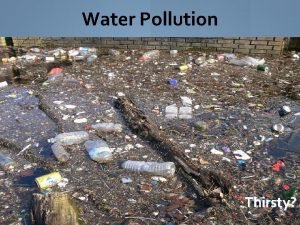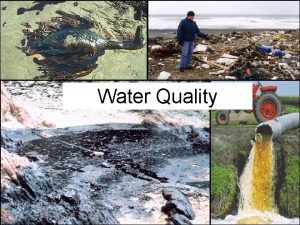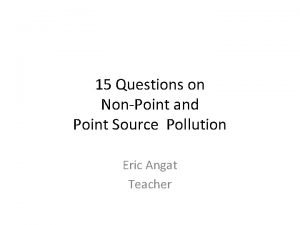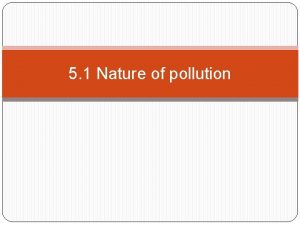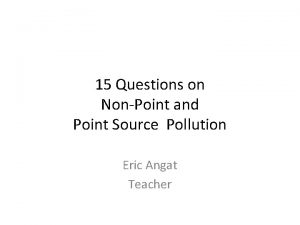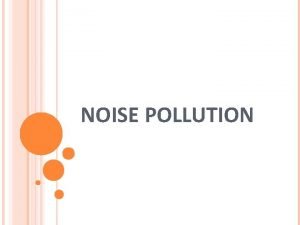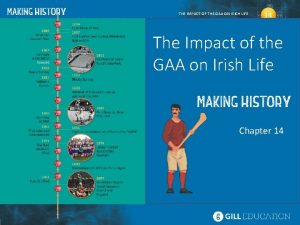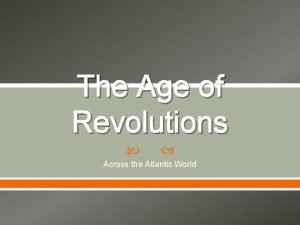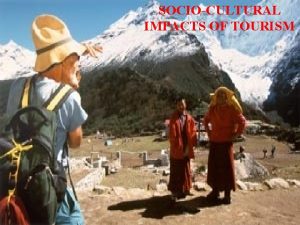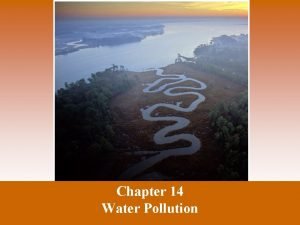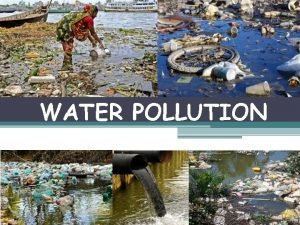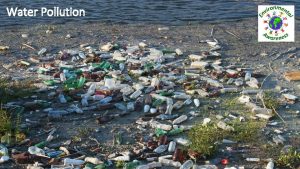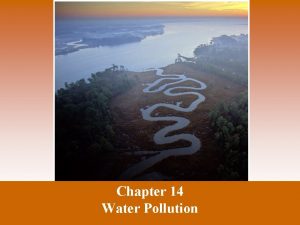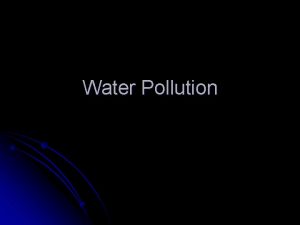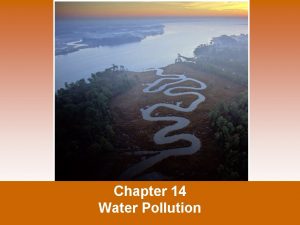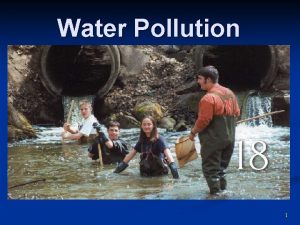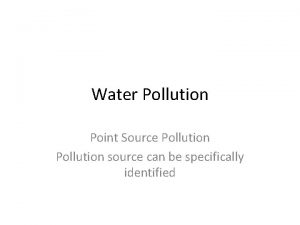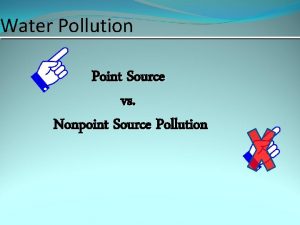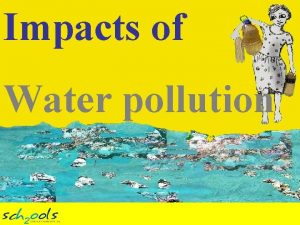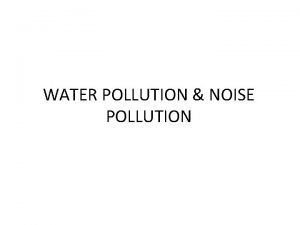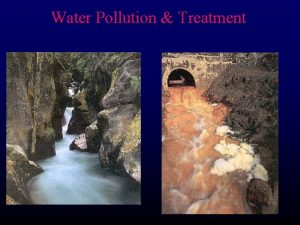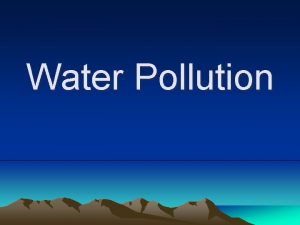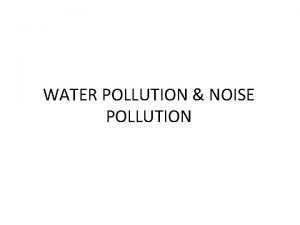Water Pollution Day 3 Source Impacts Water Pollution




















- Slides: 20

Water Pollution Day 3: Source & Impacts

Water Pollution Source

Point Sources Source can be identified and corrected. Factory & Sewage Outlets ○ Mining drainage ○ Leaking chemical tanks ○ Broken pipes ○

Non-point Sources Source cannot be narrowed to one responsible person, business, or industry. ○ Difficult to address runoff pollutants Urban roads ○ Agricultural fields ○ Deforested woodlands ○ Overgrazed pastures ○

○ Controlling Non-point Sources Best Management Practices (BMP): ○ Agriculture ○ ○ Less fertilizer, improve tillage, rotate crops, less chemicals Construction Limit it, act to prevent soil erosion ○ Urban ○ Use porous pavements, control runoff, street sweeping

Using Insects to Study Stream Health ○ A sample of stream insects, or macroinvertebrates is collected, identified and counted. ○ Sensitive invertebrates are killed by low pollution ○ Tolerant invertebrates are killed by medium pollution ○ Very tolerant invertebrates are just hard to kill at all.


Sensitive Invertebrates Riffle Beetle Mayfly Larva

Tolerant Species Crayfish Clams

Very tolerant species Pouch Snail Midge Larva

Bioaccumulation Toxins are absorbed into animals and build up over time in fatty tissue.

Biomagnification Build up as organisms consume contaminated food.

Case Study: Silent Springs DDT History of DDT: q q DDT a synthetic pesticide invented in 1874 Used with great success in World War II to control mosquitoes and prevent malaria and typhus After the war, DDT was made available for use as an agricultural insecticide, and soon its production and use skyrocketed. 1948 - Swiss chemist Paul Hermann Müller was awarded the Nobel Prize in Physiology or Medicine "for his discovery of the high efficiency of DDT as a contact poison against several arthropods. “

DDT: Part 2 1. 2. 3. Decline of birds on top of food chain (osprey, eagles) Eggs breaking before hatched BIOMAGNIFICATION

DDT: Part 3 • 1962, Silent Spring by American biologist Rachel Carson was published. Cataloged the environmental impacts spraying of DDT in the US. • The book suggested that DDT and other pesticides may cause cancer and that their agricultural use was a threat to wildlife, particularly birds. • Its publication was one of the events in the birth of the environmental movement, and resulted in a large public outcry that eventually led to DDT being banned in the US in 1972. • DDT was subsequently banned for agricultural use worldwide under the Stockholm Convention.

Other chemicals prone to biomagnification PCBs – Polychlorinated Biphenyls Heavy Metals - Hg, Cu, Cd, Cr, Pb, Zn, Sn, Ni Cyanide

Homework ○ At the end of your notes, describe how PCBs are “managed” by the power companies.



 Day 1 day 2 day 3 day 4
Day 1 day 2 day 3 day 4 Day 1 day 2 day 817
Day 1 day 2 day 817 Non-point source pollution
Non-point source pollution Water and water and water water
Water and water and water water Point source pollution examples
Point source pollution examples Control measures of water pollution
Control measures of water pollution Is eutrophication a point source pollution
Is eutrophication a point source pollution Introduction on water pollution
Introduction on water pollution Point source pollution
Point source pollution Gyre
Gyre Sound pollution
Sound pollution Material technology positive and negative impacts
Material technology positive and negative impacts Positive impacts of materials technology
Positive impacts of materials technology Negative effects of technology on environment
Negative effects of technology on environment Ecotourism advantages
Ecotourism advantages The social impact of ict
The social impact of ict When was the loom invented
When was the loom invented What impact did the gaa have on irish life
What impact did the gaa have on irish life Haitian revolution causes
Haitian revolution causes Impacts of medical technology
Impacts of medical technology Negative social impacts of tourism
Negative social impacts of tourism


